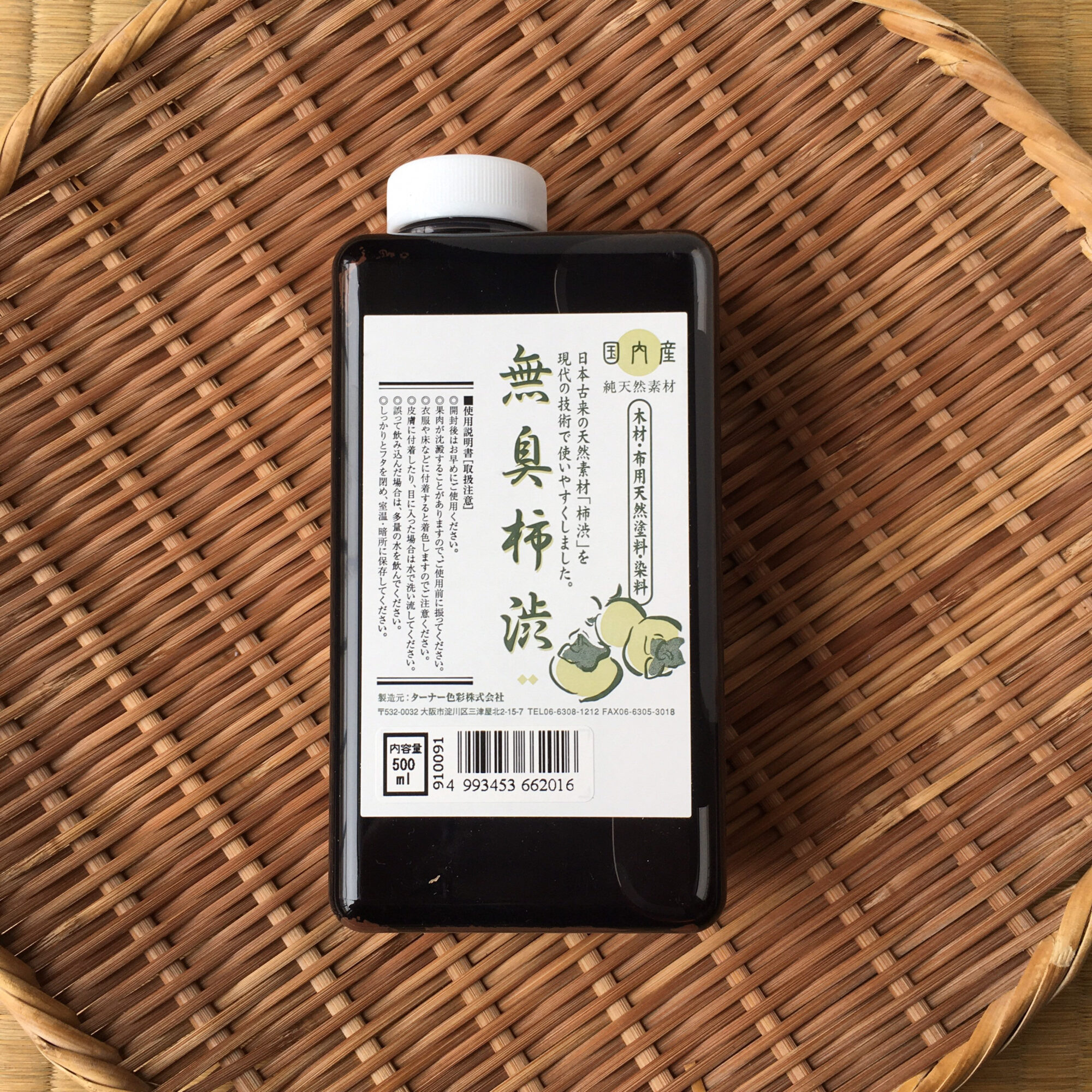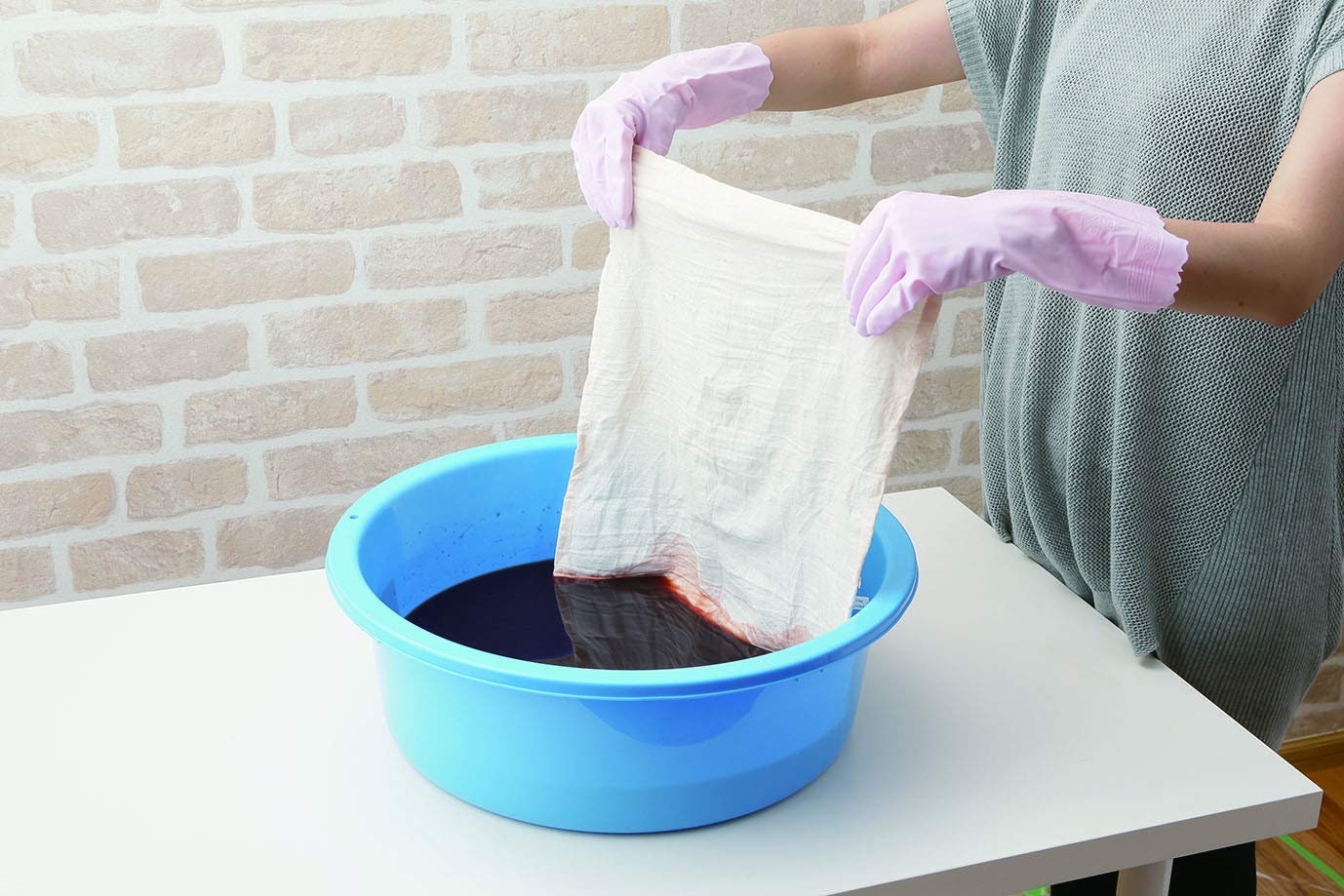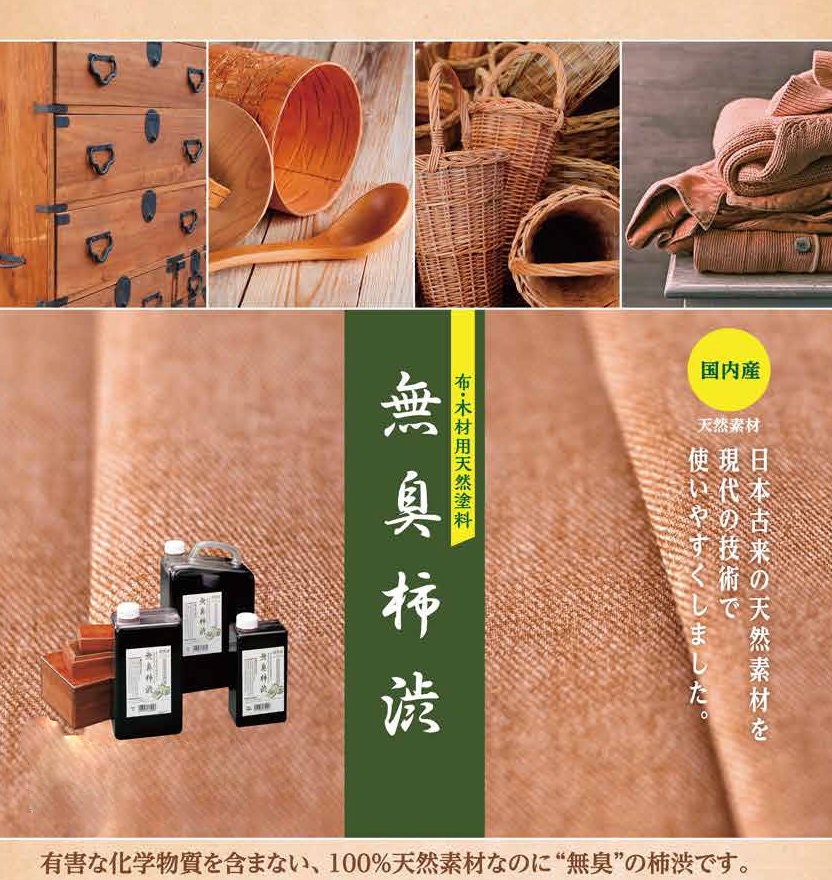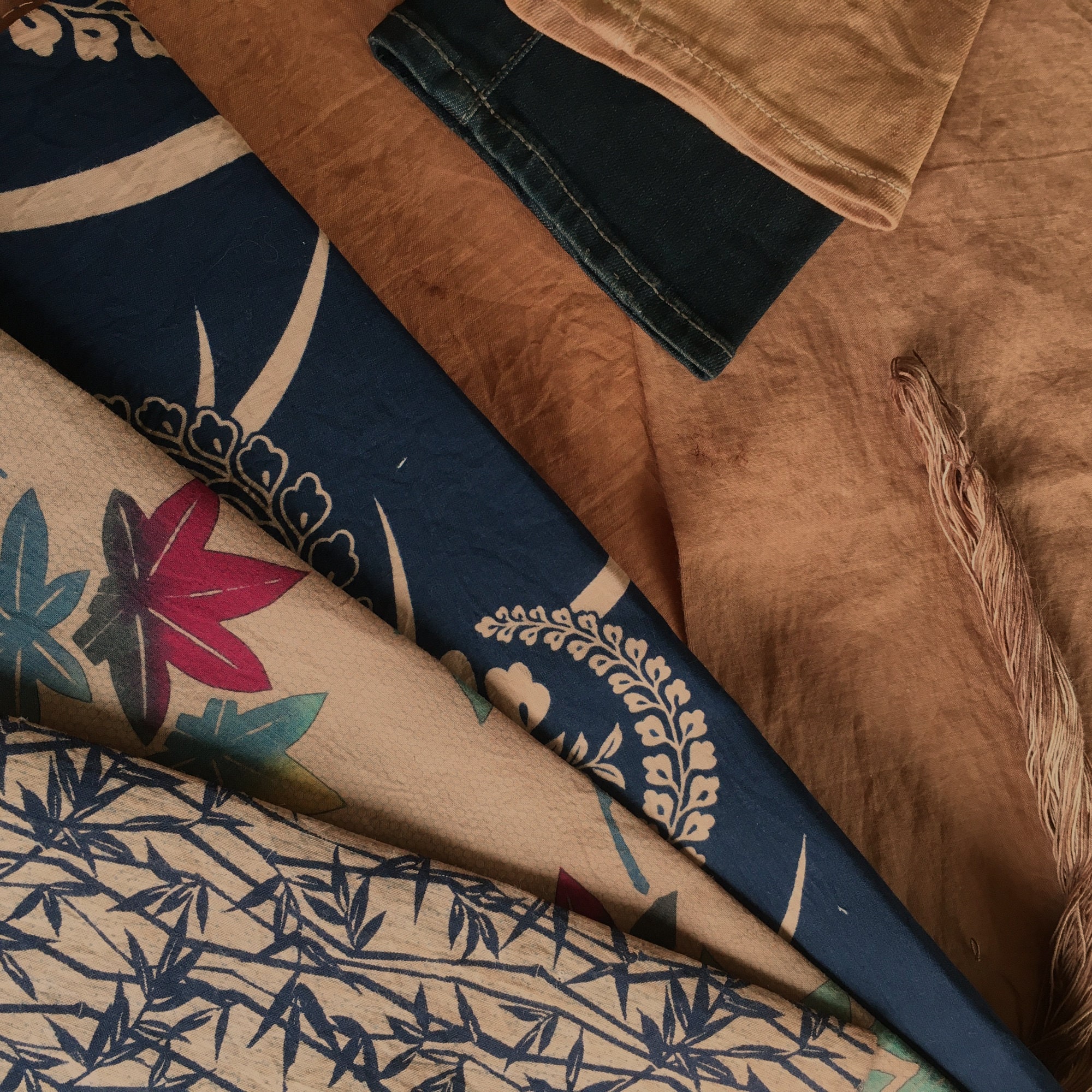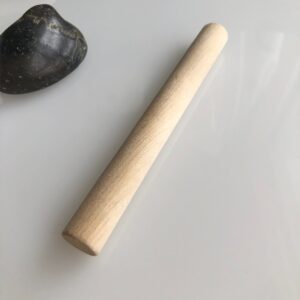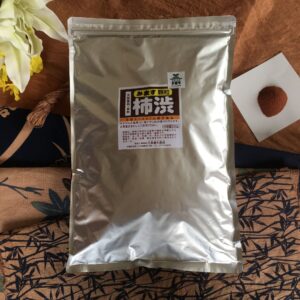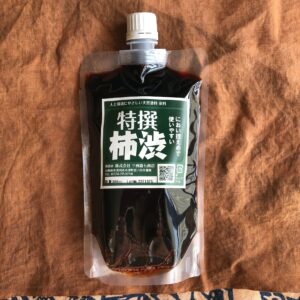Japan’s ancient natural materials are made easy to use with modern technology.
If you are interested in JAPAN Kakishibu persimmon tannin dyeing, this product is perfect!
For Wood painting, Fabric dye, Paper dye
English instruction for use.
500ml
——————–
What is Kakishibu(persimmon tannin)?
Persimmon tannin is a natural water-resistant pigment.
Kakishibu is a natural water-resistant pigment made by fermenting the juice of crushed and pressed astringent persimmon fruit.
Kakishibu makes fabrics strong, antiseptic, and waterproof.
In the old days in Japan, persimmon tannin was used to make nets, umbrellas, dye stencils, and other water-related items.
——————–
Natural paints and dyes for wood and fabric
– Odorless persimmons are manufactured from natural products.
-It is said that kakishibu has been used as paint since the end of the Heian period as waterproofing and antiseptic.
* Waterproof and antiseptic effects are inferior to current synthetic products.
-As a paint for ordinary people, it was used as a substitute for lacquer (base, etc.) for long-lasting use of firewood, barrels, fan fans, and pillars of houses.
– In industry, it has increased the strength of sake-making tools (such as sake bags), fishnets, Ise paper, gold leaf punches, umbrellas, and more.
– As a folk remedy, it has been told that it prevents mid wind, lowers blood pressure, and helps burns.
* However, turner odorless astringents are not for drinking or medicine, so do not use them for that purpose.
-Currently used for sake refiners, cosmetics, deodorants (refined products), etc.
-Recently, natural splendor has been reconsidered, and it has been attracting attention as a dye for amber and paint for building materials.
Eliminates the odor that is a drawback of amber
A major drawback of kakishibu is its unique strong odor. Pay attention to the difference in the molecular weight of components to eliminate this odor.
The tannin with a large molecular weight was left as it was, and the components other than the tannin that had a small molecular weight and caused the odor was separated and removed. This advanced technology gave birth to the “odorless kakishibu” that does not smell at all while maintaining the effect of the astringent.
[Precautions]
– If you store it in an old or low temperature (less than 10 degrees) place, it will harden and become unusable. Especially when it is transferred to a small container, it hardens faster. Please be especially careful in winter.
If the mass is soft from cream to jam, it can be restored by boiling. A jelly-shaped one cannot be used without being restored.
*International Buyers – Please Note:*
We do not include Import duties, taxes, and charges in the item price or shipping cost. These charges are the buyer’s responsibility.
Please check with your country’s customs office to determine these additional costs before ordering
